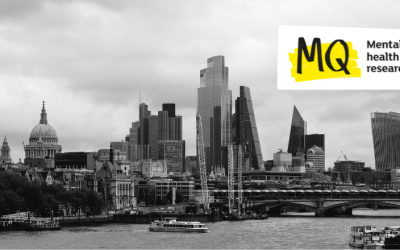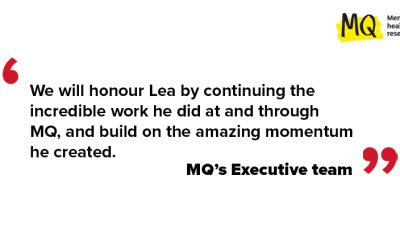The theme for Children’s Mental Health Week (5 to 11 February 2024) this year, the campaign’s 10th year, is ‘My Voice Matters’.
Childhood doesn’t usually involve much autonomy. Adults make most of the decisions about a child’s life from where they live, what they eat and when, where they go to school, what clothes they have and much more. From a child’s perspective, they might not feel heard.
Autonomy can positively benefit mental health and lack of independence can, for adults, increase symptoms of depression. Once someone has mental health problems, there are many ways mental illness can affect autonomy. For adults with mental illness, recovery can be improved by positive risk-taking and there is some argument for psychotherapy to lean more towards developing authenticity, competence and autonomy or self-belief.
Adults hopefully make decisions in the child’s best interests. But for several reasons adults that look after children may make choices that are not most helpful for the child in question. These may add to risk factors for a child to develop a mental illness.
CPTSD: Speech Shuts Down
Children may not be able to use their voices to advocate for themselves like adults can. By prioritising adults’ needs over children’s we might teach children to not get in touch with their needs. In a household with poor relationships between children and adults, this might even give way to emotional neglect or even enable abusive dynamics. Children can experience ongoing stressful situations and this may lead to children developing mental illnesses such as Complex Post Traumatic Stress Disorder or cPTSD.
Emotional, physical or psychological abuse has hugely detrimental effects on mental health, particularly at formative years of childhood as it may lead to development of cPTSD. Unlike PTSD, which is a mental illness that develops in adulthood when an adult is aware of the traumatic experience they go through, cPTSD is a mental illness borne of ongoing trauma in childhood. This could include experiencing ongoing pervasive abuse or trauma as the brain is forming, meaning the symptoms of PTSD are essentially ‘baked into’ a young person’s development.
These people are commonly diagnosed or misdiagnosed with many other mental illnesses later in life before receiving a diagnosis of cPTSD.
A symptom of cPTSD is emotional flashbacks. When this happens, the area of the brain in control of speech shuts down similarly to when someone has a stroke. This means the individual cannot articulate themselves properly and therefore is unaware of what exactly is happening and cannot communicate clearly to those around them.
Expressing Differently
Sometimes, adults might expect children to express themselves verbally, as adults tend to communicate. Children have different ways of expressing their voice, not always verbally. Going beyond language to listen to the voices of children can have very positive effects on mental health.
Using creativity such as drawing or painting to express feelings can be beneficial, depending on the child it could be a good way of helping them express themselves without words.
For older children and adolescents, cinema therapy can be helpful to talk about difficult experiences or feelings through the diluted lens of fictional characters and stories. Even though instructional videos about getting help for mental health tend to have stronger results than narrative films alone, cinema therapy continues to be a popular tool for many groups looking to help adolescents with their mental health.
Drama therapy seems to have a very positive effect for many young people, with improvement on overall psychosocial problems, internalizing and externalizing problems, social functioning, coping and regulation processes, social identity, and cognitive development
Music therapy has also been shown to have many benefits to help people express themselves beyond language and can also be a helpful tool to help children and young people express themselves through a different communication tool. If you’d like to involve your child in music or even yourself to benefit your mental health, find out more about Key Changes. This award-winning, evidence-based UK charity work with communities to encourage mental health and wellbeing through music.
Playtime is also a vital tool in helping children express themselves and to promote better mental health. In fact, children who spend more time playing adventurously have fewer internalised problems. Moreover, this positive association between adventurous play and better mental health was stronger for children from lower income families than for those from higher income families. So maybe consider playing with your child if you’re keen to get them to express themselves more freely.
Friends Listen
It can be helpful to remember, friendships affect children’s well-being. In childhood and adolescence, friendships are vital to development and can provide mental health support, awareness and encouragement. Isolation is known to be damaging to mental health.
So it seems creativity and friendship could be linked in a positive outcome for mental health. Drama groups, art groups and music groups help children to both express themselves differently and also connect them to support networks.
Young people also encourage each other to pay attention to self-care which can be positive for mental health. Young people associate self-love with resilience and prevention of depression or anxiety but the accepted norms of those around us in children’s environment such as families or culture, affect their ability to develop strong self-care practices. If our families do not encourage self-care or practice it themselves, children do not learn it. It is human nature to learn from each other.
Teaching the Language of Mental Health
Mental health and language related to it can be ambiguous and difficult for young people and children to use. Clinical terminology isn’t easy for adults to use correctly, let alone younger age groups.
An understanding of mental health language is needed so that children and young people as well as parents, schools and services can support the mental well-being of youngsters. Developing the mental health knowledge of staff at schools is one way we could help children’s voices to matter. School does have a vital role to play in a child’s mental health since that environment and a safe, secure and supportive home are the two major factors in a child’s development.
Children’s voices matter, and the way they speak to themselves about their mental health and well-being matters just as much as listening to them does. Self-stigma, negative stereotypes and self-blame is common among children (and adults) who struggle with mental health. To combat this, children and adults need to be taught why mental health conditions develop, research suggests.
Teachers, schools, and parents can make a real difference to a child’s life by being informed themselves. To help children better cope with difficulties they might face that could be detrimental to their mental health, life skills training could be taught in schools to develop healthy coping strategies.
Equal Voices
Another reason why children’s voices matter, particularly for MQ, is that research into children and young people’s perspectives regarding their own lived experiences is scarce. The most pronounced life challenges for young adults, according to research, include academic failures, negative feelings about themselves when compared to their peers, relationship problems, and stress or mental ill-health.
The mental health of children and young people is a huge area of concern globally but inequalities in research are a major worry in the science community.
In 2021, 51 UK-based research articles published since 2004 were reviewed focusing on the needs of those aged 6-17 years. The three main contributors to mental distress were ssocioeconomic disadvantage, family instability and parental distress. The three most commonly research topics were emotional, conduct, and hyperactivity difficulties. The four least represented groups were migrant, BAME, physically disabled, and LGBTQ children which were all “severely underrepresented”. Additionally, it was found that research was reliant in this period on samples from clinics, therefore entirely missing the information about needs of children unable to access services.
In MQ’s 2017 Funding Landscape report, we found that 26% of money spent on mental health research goes towards projects on children and young people, despite 75% of mental illness beginning before the age of 18.
We also found that nearly 3.5 million children and young people in the UK are affected by a mental illness each year. Thankfully though, momentum is building in this area and several significant research initiatives have begun. At MQ, we launched our Brighter Futures programme to address this inequality in funding and to prioritise research into the mental health of children and young people.
All children’s voices matter. This is why MQ are focusing on tackling inequalities in the research we are supporting, as well as funding many studies into the mental health of children and young people.



